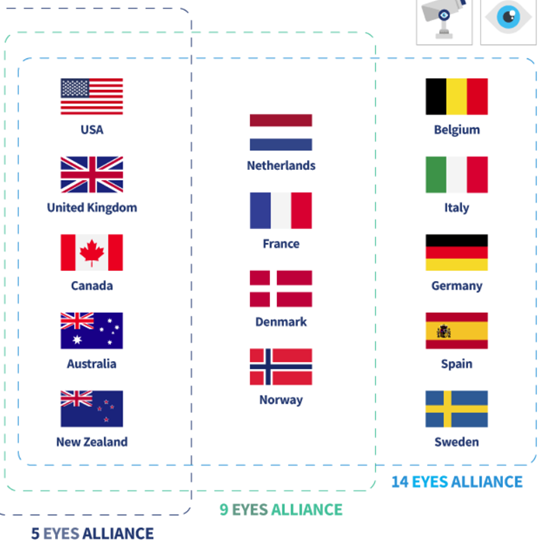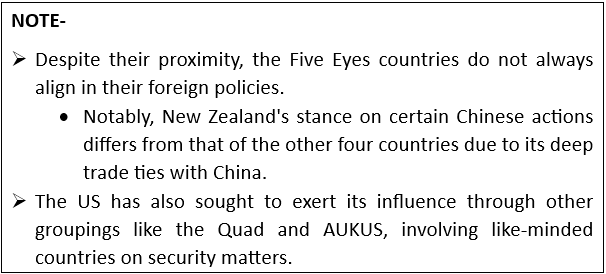- Courses
- GS Full Course 1 Year
- GS Full Course 2 Year
- GS Full Course 3 Year
- GS Full Course Till Selection
- Online Program
- GS Recorded Course
- NCERT (Recorded 500+ Hours)
- Polity Recorded Course
- Geography Recorded Course
- Economy Recorded Course
- AMAC Recorded Course
- Modern India, Post Independence & World History
- Environment Recoded Course
- Governance Recoded Course
- Science & Tech. Recoded Course
- International Relations and Internal Security Recorded Course
- Disaster Management Module Course
- Ethics Recoded Course
- Essay Recoded Course
- Current Affairs Recoded Course
- CSAT
- 5 LAYERED ARJUNA Mentorship
- Public Administration Optional
- ABOUT US
- OUR TOPPERS
- TEST SERIES
- FREE STUDY MATERIAL
- VIDEOS
- CONTACT US
India-Canada standoff: Five Eyes Alliance
India-Canada standoff: Five Eyes Alliance
26-09-2023

Latest Context
- On 19 September, 2023 Canadian PM alleged that the Indian government may have “potential links” to the killing of separatist leader Harmeet Singh Nijjar in Canada.
- After this, the ties between both countries are under strain.
- This incident has brought attention to the role of the Five Eyes Alliance.
Five Eye Alliance
|
Introduction |
|
|
Features |
|
Historical roots and evolution
- When the United Kingdom and America agreed to share intelligence following their success in breaking codes from both Germany and Japan during World War II, that was the beginning of this alliance.
- The UKUSA agreement was signed in 1946, which Canada joined in 1949, and New Zealand and Australia did so in 1956, solidified the alliance.
- In 1943, the BRUSA (Britain-USA) agreement laid the foundations for what would become the UK-USA (UKUSA) agreement.
- BRUSA was signed to allow intelligence sharing between the two countries to support US forces in Europe.
- The official recognition of the UK USA Agreement was issued in 2010 when its records were made public, though there has been knowledge of their existence since the 1980s.
Functioning of the Five Eyes Alliance
- In intelligence collection and security matters, countries often engage with each other.
- The five Eyes countries have come closer together over the past few years, as a result of common interests such as balancing China's rise.
- Their common language and mutual trust built up over decades of engagement were also cited as reasons for their closeness.
- A Five Eyes Intelligence Oversight and Review Committee came into existence in 2016.
- This includes the Five Eyes countries' nonpolitically motivated intelligence oversight, review and security agencies.

Role of 5 Eyes in the Current India-Canada Issue
- Countries like the USA, the UK and Australia especially are seen as close to India.
- They also have significant Indian and Indian-origin populations within them, similar to Canada.
- They have also seen some instances of pro-Khalistan activities in the last few years.
- But due to their historical closeness to Canada and the alliance on one hand, and India, an emerging global power on the other, outright support for India or Canada is unlikely.
- Given the state of ties, these countries, particularly the US, could play a mediating role in the issue once they have clear intelligence and information on the matter.



